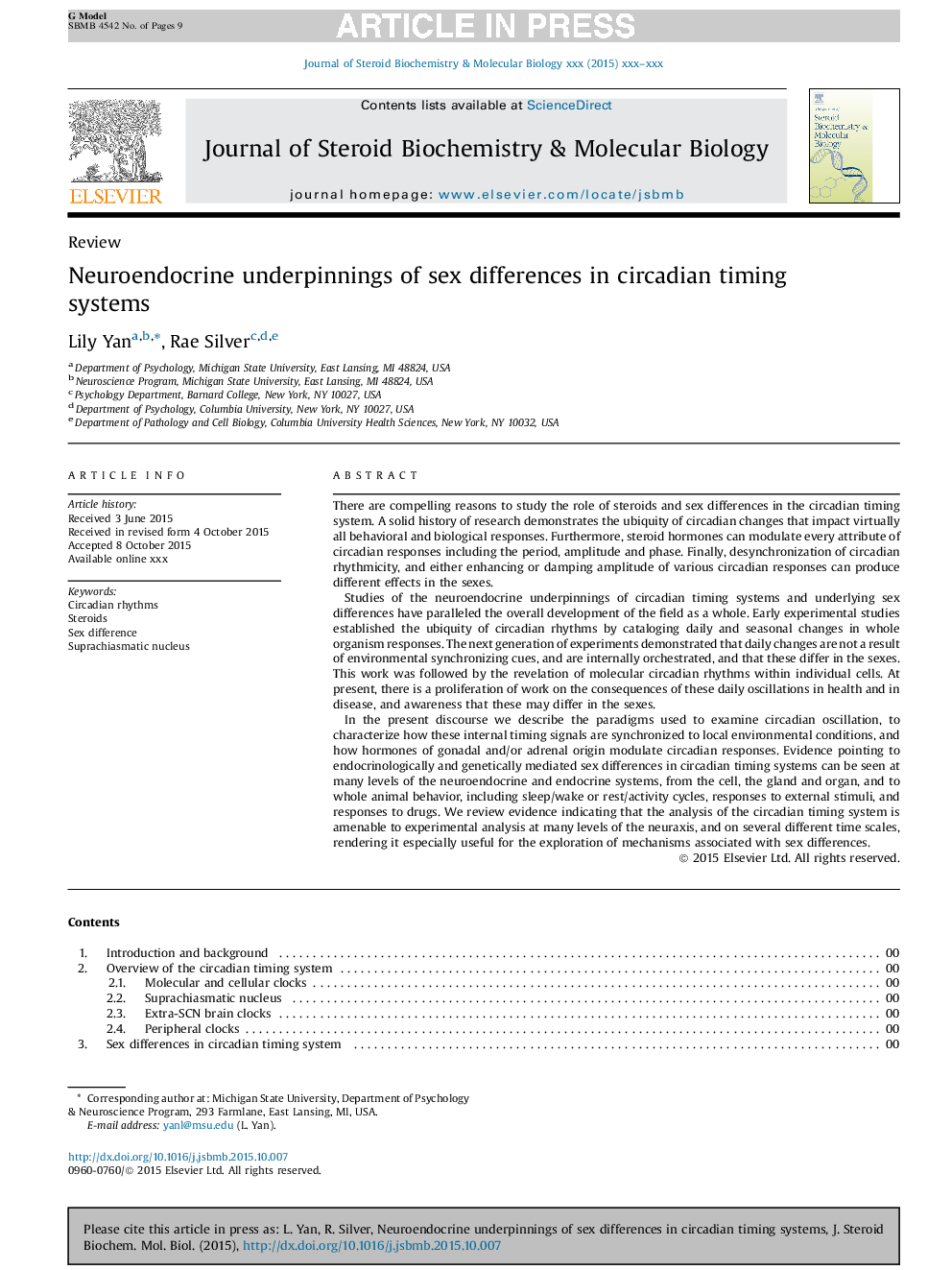| Article ID | Journal | Published Year | Pages | File Type |
|---|---|---|---|---|
| 8338054 | The Journal of Steroid Biochemistry and Molecular Biology | 2016 | 9 Pages |
Abstract
In the present discourse we describe the paradigms used to examine circadian oscillation, to characterize how these internal timing signals are synchronized to local environmental conditions, and how hormones of gonadal and/or adrenal origin modulate circadian responses. Evidence pointing to endocrinologically and genetically mediated sex differences in circadian timing systems can be seen at many levels of the neuroendocrine and endocrine systems, from the cell, the gland and organ, and to whole animal behavior, including sleep/wake or rest/activity cycles, responses to external stimuli, and responses to drugs. We review evidence indicating that the analysis of the circadian timing system is amenable to experimental analysis at many levels of the neuraxis, and on several different time scales, rendering it especially useful for the exploration of mechanisms associated with sex differences.
Related Topics
Life Sciences
Biochemistry, Genetics and Molecular Biology
Biochemistry
Authors
Lily Yan, Rae Silver,
